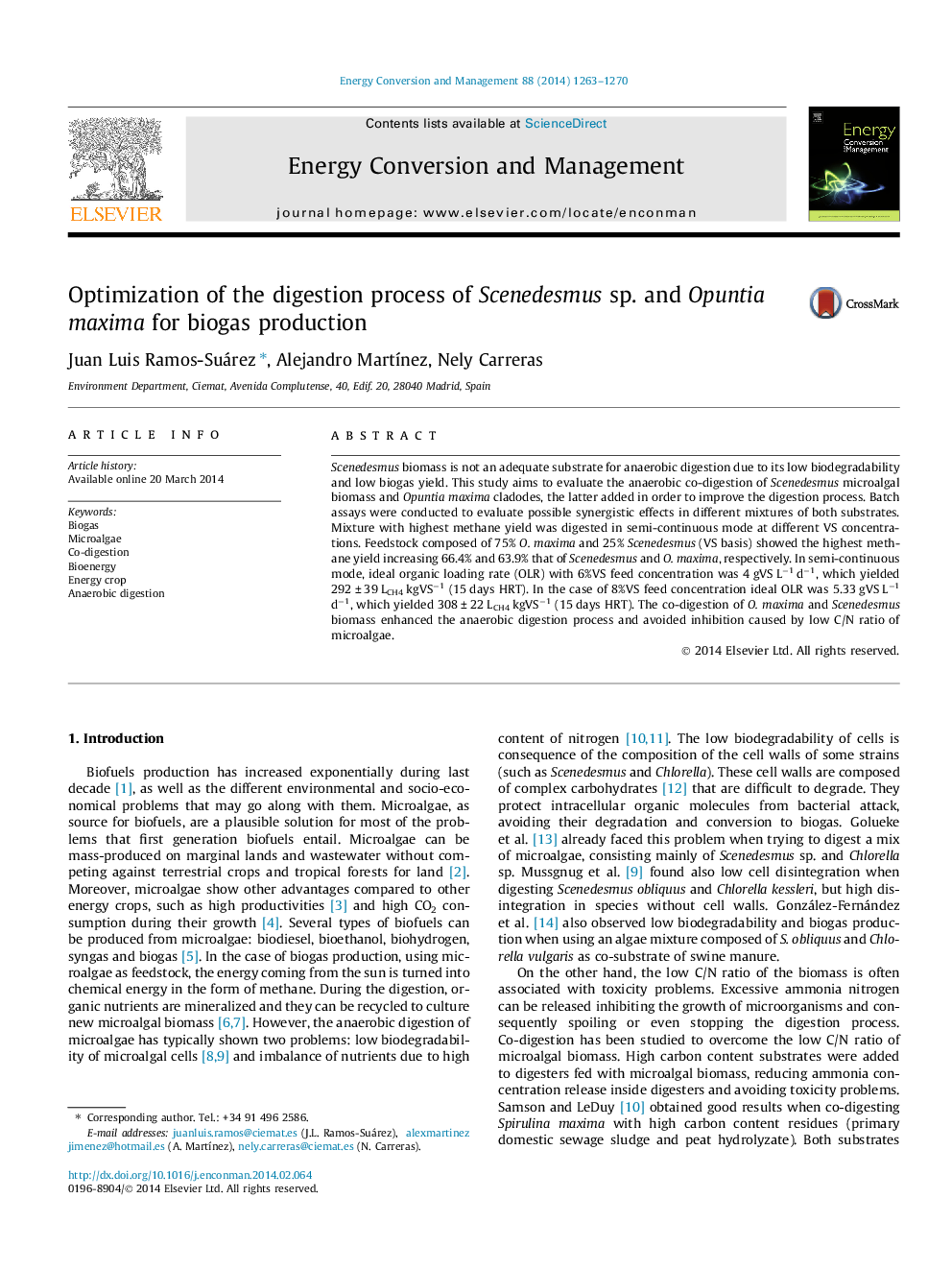| Article ID | Journal | Published Year | Pages | File Type |
|---|---|---|---|---|
| 765616 | Energy Conversion and Management | 2014 | 8 Pages |
•Scenedesmus biomass showed low biodegradability and biogas production.•Methane yield and kinetics of the batch process were improved by co-digestion.•Scenedesmus and Opuntia maxima were successfully co-digested in CSTR.•High biogas yields were obtained and no inhibition by ammonia was observed.
Scenedesmus biomass is not an adequate substrate for anaerobic digestion due to its low biodegradability and low biogas yield. This study aims to evaluate the anaerobic co-digestion of Scenedesmus microalgal biomass and Opuntia maxima cladodes, the latter added in order to improve the digestion process. Batch assays were conducted to evaluate possible synergistic effects in different mixtures of both substrates. Mixture with highest methane yield was digested in semi-continuous mode at different VS concentrations. Feedstock composed of 75% O.maxima and 25% Scenedesmus (VS basis) showed the highest methane yield increasing 66.4% and 63.9% that of Scenedesmus and O.maxima, respectively. In semi-continuous mode, ideal organic loading rate (OLR) with 6%VS feed concentration was 4 gVS L−1 d−1, which yielded 292 ± 39 LCH4 kgVS−1 (15 days HRT). In the case of 8%VS feed concentration ideal OLR was 5.33 gVS L−1 d−1, which yielded 308 ± 22 LCH4 kgVS−1 (15 days HRT). The co-digestion of O.maxima and Scenedesmus biomass enhanced the anaerobic digestion process and avoided inhibition caused by low C/N ratio of microalgae.
